Lisbon for Children and Teens
Besides the car rental, another question I often get from folks planning trips to Portugal is: “What is there for my child or teenager?” The short answer is “plenty.” At least three days’ worth, not including side trips to Sintra or to the beaches at Cascais, each of which is reachable by commuter train and worth a day in itself.
Although Richard and I never visited Portugal when our children were young, we had two sets of friends with tween daughters, and Derrick and Maddy were barely out of their teens when they visited us at the end of our Fulbright year. And having traveled with our children to other places, we have a pretty good idea of what kinds of attractions would fascinate them, and which would set off a whine-fest. My recommendations come with a couple of caveats, though. The first is that I don’t have much experience with very young children, since we never took ours on trips when they were under the age of six. The second is that I still don’t recommend renting a car in Lisbon, so all of the destinations are ones reachable by public transportation or an inexpensive cab ride. However, the only place that leaves out is the huge Monsanto Park at the northwestern edge of the city, which is a better destination for very young children anyway. I’ve grouped the recommendations by area of the city to make your planning easier.
For children, ages 6 and up:
Parque das Nações area (Metro Red Line, Cabo Ruivo or Oriente station):
Oceanário de Lisboa: In the opinion of my friends’ kids, this is the #1 attraction. In fact, 12-year-old Olivia insisted on staying all day long, which meant her parents went to the Museu de Arte Antigo in the afternoon without her. (I stayed back with Olivia as well.) The Oceanário isn’t just any aquarium; it’s the largest in Europe, an amazing immersive experience in a futuristic building with fascinating special exhibits that run the gamut from mythic sea monsters to underwater forests. TripAdvisor rated it the best aquarium in the world. Go early and avoid the heaviest crowds.
Pavilhão de Conhecimento: The Knowledge Pavilion is a wonderfully interactive science museum with activities for all ages. Its strength lies in topics related to engineering, and it’s a great example of the “live science” approach of museums today.
Telecabine Lisboa: Cable cars are pretty ubiquitous in major cities and theme parks, but this one offers a birds-eye view of the Parque das Naçoes area, the Vasco de Gama tower and bridge, and the Rio Tejo. The park, museums, mall, rail station, tower, and bridge are only 20 years old, constructed in advance of the 1998 World’s Fair.
Belém (multiple bus lines or the 15E streetcar):
Pastéis Belém: The kids may cheer at the sight of a familiar Starbucks (as Olivia did), but pass it up and go straight to this pastry shop, established in 1837 and considered to be the first seller of Portugal’s classic pastel de nata. The pastel de nata, a custard tart, was allegedly invented across the street by monks at the Mostério dos Jerónimos. And enjoying these pastries will put you and the children in the appropriate frame of mind to visit…
Mostério dos Jerónimos: Besides its culinary achievements, the Jeronimos Monastery is the only major building in Lisbon to have survived the 1755 earthquake, fire, and tsunami. Visitors learn about the lives of the monks and the place of the monastery in Portugal’s history. Children will enjoy running through the cloisters. If they’ve studied the Age of Exploration in school, they will appreciate the sanctuary, which contains the tombs of Vasco da Gama and the poet who immortalized his exploits, Luis de Camões. Most people ignore the poet’s tomb, but the explorer would have been nowhere without someone to tell his story.
Museu da Electricidade: Once you’ve left the monastery, there are several museums that deserve a visit. Like the Knowledge Pavilion, this Museum of Electricity is full of hands-on activities and fun exhibits, all located inside an old power plant. It’s a cool way to learn about the history of power generation, and if your timing is right, you may get to see a special event.
Museu da Marinha: The Maritime Museum is where I fell in love with Lisbon, back in 2009. Visitors wander through a large room that contains a variety of water craft, from families’ fishing boats to battleships to the yacht that Britain’s Queen Elizabeth used when she visited Portugal. Another room has models of the naus, the sailing ships that traversed the globe in the fifteenth through eighteenth centuries.
Walking around: The Tower of Belém was a medieval prison on the shores of the river and is worth a look, as is the Monument to the Discoveries, where mothers and wives saw their men off to places and fates unknown. There is also the Ajuda Botanical Garden, established in the eighteenth century, which features trees and flowers imported from former Portuguese colonies along with ornate statues and fountains. I’m not usually a fan of botanical gardens, but kids will enjoy the variety of wildlife that also lives here. Olivia confronted a peacock and was lucky to escape without being nipped by one of these often-aggressive birds.
Around the city:
The Hills Tramcar or the 28 streetcar: These travel up and down the hills of the old city, from the historic Alfama neighborhood east of downtown, past the Terreiro do Paço (the giant square along the river) and the Largo de Camões (a popular downtown gathering spot), to the upscale Estrela neighborhood. Either one of the streetcars offers a fun ride. You can get on and off the Hills Tramcar on a single ticket, but if you buy a metro day or weekly pass, it’s even cheaper, and you can use it to ride the funiculars (called “elevadores”) as well. Just watch out for pickpockets on the 28 streetcar. I never encountered one, but that line is apparently notorious.
The Castelo de São Jorge: The famous castle located along the Hills Tramcar/28 route and is a kids’ favorite. It offers a great view of the city and the kids can wear themselves out running around the courtyard, along the walls, and up to the tower. From anywhere else in Lisbon, the castle is hard to miss, with its high walls and huge Portuguese flag flapping in the wind.
The Fragata Dom Fernando II e Glória: Kids will enjoy exploring this nineteenth century sailing ship turned into a museum. A fire in 1963 nearly destroyed the ship, and it took 29 years to restore it to its former grandeur. Visitors can tour the ship and learn about its uses over the years as well as the process of restoration. And getting there is half the fun! The ship/musuem is located in Cacilhas, across the river from Lisbon, reachable by a ferry that runs from the Cais do Sodré every 20 minutes. I researched my novel in progress in Almada, up the hill from the Cacilhas terminal, and rode the ferry many times.
For teens:
Teens will enjoy most of the attractions for children, which are geared to a wide range of ages. The Parque das Nações also features a skate park and bike rentals. It’s flat and well-paved (not cobblestones), so it’s one of the easiest places in Lisbon to ride a bike. I love the architecture of the Vasco da Gama mall, but the shopping is nothing special in comparison to…
Principe Real: Vintage stores, cutting-edge Portuguese designers, and clubs and restaurants make this neighborhood a go-to area for young people. Since I wrote my blog piece on shopping in Lisbon, another three or four mansions around the park have become trendy mini-malls and even more are in the works. And for those looking for an old-school science museum, with an authentic nineteenth century lab and lecture hall, check out the Natural History Museum at the former Escola Politécnica, up the street from the park and near the Rato metro station on the Yellow Line.
Feira da Ladra: The thirteenth century “Thieves’ Market” is now the city’s premier flea market between the São Vicente church and the Pantheon in the Alfama neighborhood, along the 28 streetcar line. It’s open on Sundays and Tuesdays only and features a wide range of items from broken 20-year-old electronics to vintage clothing and CDs of music from Africa.
Museu do Aljube — Resistência e Liberdade: The site of the former Aljube political prison is now the Museum of Resistance and Liberation, a living documentary of the 48-year dictatorship and the struggle for democracy. Three-dimensional exhibits show the mechanisms of the police state and the secret meetings and equipment used to undermine it. Visitors can sit in a replica of one of the solitary confinement cells, a box within a box. Clips from documentary films of Nazi Germany and the Second World War offer a wider context, relating the events in Portugal to what teens have studied in U.S. and world history classes. Fans of dystopian series such as Matched and The Hunger Games will get to see what it was like to live in a real-life police state. This museum is located along the 28 streetcar line in the Mouraria neighborhood, across the street from the Lisbon Cathedral. and a short walk (though on a steep downhill) from the Castelo de São Jorge.
Lisbon’s African Roots tour: This five-hour tour with Togo-born historian Naky explores the history of the slave trade and slavery in Portugal in general and Lisbon in particular. Teens studying the topic in school will visit actual sites where people stolen from Africa arrived on Portuguese-built ships, lived, worshipped, died, and were buried. This well-paced tour offers opportunities to sample snacks imported from various African countries and to enjoy a meal at a traditional restaurant from Cabo Verde.
General notes:
With the exception of the Oceanário, the museums are relatively inexpensive, and some are free. Many offer free admission on Sundays. At certain times of the year, additional family-friendly events take place. One of my favorites is the Lego Fan Event (now called the MEO Fan Event), which is held at Campo Pequeno (metro Yellow Line) during the last week in April and the first week in May. The premier Lego builders from Portugal and throughout Europe display their work, and visitors can try out the latest games and purchase hard-to-find elements from vendors. The Feira do Livro (Lisbon Book Fair) is held in the Parque Eduardo VII (metro Marques Pombal, Yellow and Blue Lines, or Parque, Blue Line) from the end of May to the middle of June. The fair features many activities for children, and while most of the books are in Portuguese, there are some in English, French, and German or multilingual editions. Kiosks in the metro or Time Out Lisbon are good places to find out about these special events.

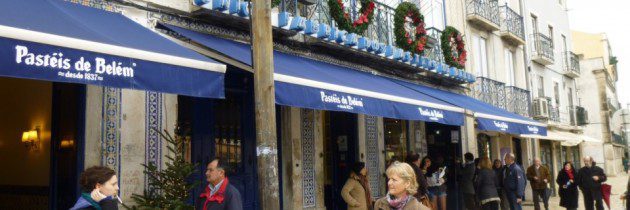
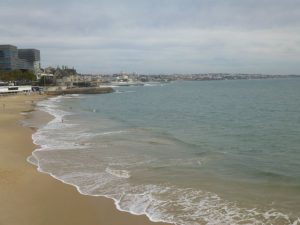

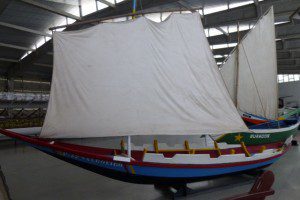
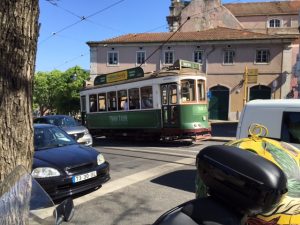

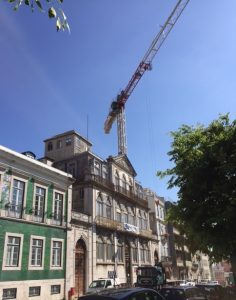
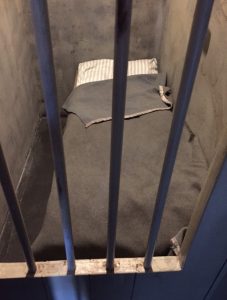





What a great list! Definitely one to bookmark!
Thank you, Linda! I hope it helps people as they visit Lisbon.
Lyn: thank you!
Everyone else: Lyn is absolutely right. Lisbon is a fabulous place to visit with young people. We visited Lyn and her husband Richard 3 years ago with our 12 year old daughter and she loved it, we all did! So, if you are thinking of visiting Lisbon, I have one word for you: Go! You won’t regret it.
Thank you for visiting with Olivia! I’m glad you had such a good time and hope she goes back on her own as a teenager or young adult and with her children one day, where she can tell them about her adventures (including with the peacock).